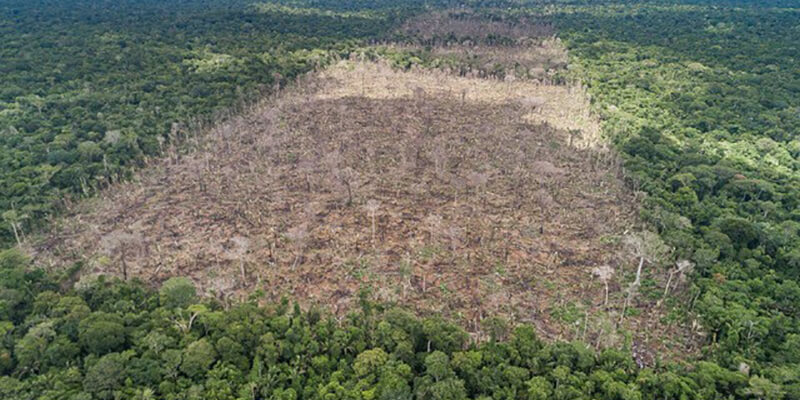Description

Copyright infringement is not intended
Context: According to a new study, more than 75% of Amazon rainforest near tipping point since the early 2000s and may transform into dry savanna.
The researchers used satellite data and statistical tools to arrive at these findings:
- a tipping point would occur when the rainforest witnesses roughly 20-25 per cent of deforestation.
- increasing temperatures due to human-induced climate change and deforestation are pushing the rainforest to transform into a carbon source.
Rainforest vs Savanna:
- Rainforests are characterized by a closed and continuous tree canopy, moisture-dependent vegetation, the presence of epiphytes and lianas and the absence of wildfire. Rainforest can be classified as tropical rainforest or temperate rainforest.
- Savannas are a transitional biome, not really a forest and not really a desert – just somewhere in between. These are mixed woodland-grassland ecosystem characterised by the trees being sufficiently widely spaced so that the canopy does not close. The open canopy allows sufficient light to reach the ground to support an unbroken herbaceous layer consisting primarily of grasses.
What is tipping point?
- "Tipping point" is a point where trees may die off en masse.
- After reaching a tipping point a forest lost its ability to bounce back from damage caused by droughts, fires and deforestation.
The Amazon basin:
- The Amazon basin is huge with an area covering over 6 million square kilometres, it is nearly twice the size of India.
- The Amazon rainforests cover about 80 per cent of the basin.
- It is home to nearly a fifth of the world’s landspecies and about 30 million people including hundreds of indigenous groups and several isolated tribes.
- It produces about 20 per cent of the world’s flow of freshwater into the oceans.
- Forest fires have doubled since 2013. One reason is when farmers burn their land to clear it for the next crop.
Amazon’s forest ecological importance:
- Conserving rich biodiversity: Amazon’s rainforest is home to 30 per cent of the world’s species, comprising 40,000 plant species, 16,000 tree species, 1,300 birds and more than 430 species of mammals.
- High carbon-storing potential: The rainforest is also a carbon sink — a place that absorbs more carbon dioxide than it releases.
- It plays an essential role in combating climate change.
What can be done?
- Reducing deforestation can protect the forest’s threatened parts and boost Amazon rainforest resilience.
- Limiting global greenhouse gas emissions to safeguard the Amazon.
https://www.downtoearth.org.in/news/climate-change/more-than-75-of-amazon-rainforest-near-tipping-point-may-transform-into-dry-savanna-study-81876














